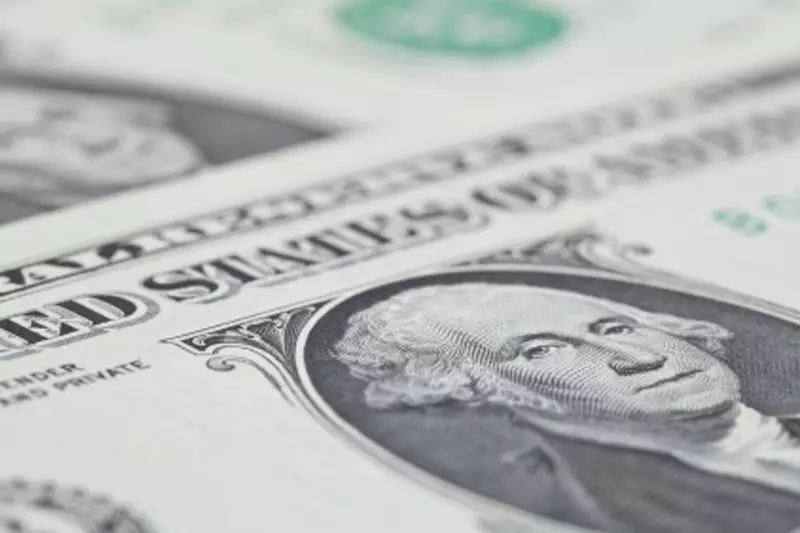The currency market is constantly influenced by a variety of factors, ranging from geopolitical events to economic data releases. Recently, the U.S. dollar has experienced fluctuations that are worth unpacking, especially in the context of shifting political landscapes and impending inflation data. This article will dissect these elements, exploring both their immediate impacts on the dollar and the broader implications for international currency dynamics.
On a crisp Wednesday morning, the U.S. dollar experienced a slight decline after reaching a six-month high, notably surpassing the 106 mark against a collection of currencies. The Dollar Index, which serves as an indicator of the dollar’s performance across six major currencies, was down by 0.1% at 105.850. This decrease can be attributed in part to market anticipation surrounding key inflation figures that were set to be released later that day. The upcoming consumer price index (CPI) for October is of special interest, with economists predicting a rise in annualized price growth to 2.6%, an increase from the previous month’s 2.4%. Such data points are crucial as they guide Federal Reserve policymakers in making informed decisions regarding interest rate adjustments.
The recent ascent of the U.S. dollar can largely be traced back to the political triumph of former President Donald Trump. His electoral success has instigated expectations of pro-growth policies, including potential tax cuts and reduced trade tariffs. These measures often lead to inflationary pressures, which can bolster currency values in the short term as investors position themselves favorably for anticipated economic conditions.
As the dollar fluctuates, the market remains acutely aware of the significance of economic indicators that influence monetary policy. The Federal Reserve is particularly attentive to inflation trends, as these figures will dictate the trajectory of interest rates not just for the remainder of this year but extending into 2025. Analysts at major financial institutions have noted that the strengthening dollar reflects market sentiment that is largely banking on a favorable implementation of Trump’s proposed policy framework. However, this optimism could lead to opportunistic profit-taking if subsequent data releases or dovish Fed communications signal a shift in outlook.
The focus is not solely limited to the American economy—European dynamics also play a critical role in this currency chess game. The euro is caught in a vice of political instability and economic challenges. The EUR/USD exchange rate hovered near a one-year low, primarily due to uncertainties stemming from Germany’s political climate and the looming threat of retaliatory tariffs from the U.S. Such geopolitical tensions inevitably weigh on the single currency, complicating the eurozone’s monetary landscape.
Across the English Channel, the British pound finds itself knee-deep in challenges as well. Recent cuts in interest rates by the Bank of England, the second such reduction this year, have introduced volatility in GBP/USD exchange rates. Following these developments, the pound managed to inch up slightly but remained just above significant lows. Market participants are now keenly awaiting statements from Bank of England officials, as insights into fiscal policy adjustments could sway investor sentiment in the UK.
Catherine Mann’s forthcoming speech is particularly anticipated, given her hawkish views within the Monetary Policy Committee. Investors will scrutinize her comments for any indication of inflation risks associated with recent fiscal boosts. The dynamics of wage figures and their implications for monetary policy will also be pivotal in determining the future of the pound’s strength against the dollar.
Another focal point in the currency narrative is the relationship between the U.S. and China. The USD/CNY pair saw a modest decline as market reactions to China’s fiscal maneuvering appeared lukewarm in light of the ongoing economic pressures exacerbated by renewed U.S. policies under the Trump administration. The challenges faced by China, viewed through the lens of a resurgent dollar, exemplify the complex interplay between national economies and global currency valuations.
This situation is further complicated by Japan’s uncertain monetary and political outlook. An increase in USD/JPY indicates investor skepticism regarding Japan’s ability to maintain favorable economic conditions amid external pressures.
The U.S. dollar’s recent movements unveil a multifaceted narrative shaped by political, economic, and global elements. As key economic indicators and policy decisions unfold, the currency markets will remain a critical barometer of investor sentiment and economic health. The intricacies of international relationships and domestic policies will play defining roles in shaping the future trajectory of the dollar, the euro, the pound, and other major currencies. Understanding these dynamics is essential for stakeholders looking to navigate this ever-evolving landscape effectively.

